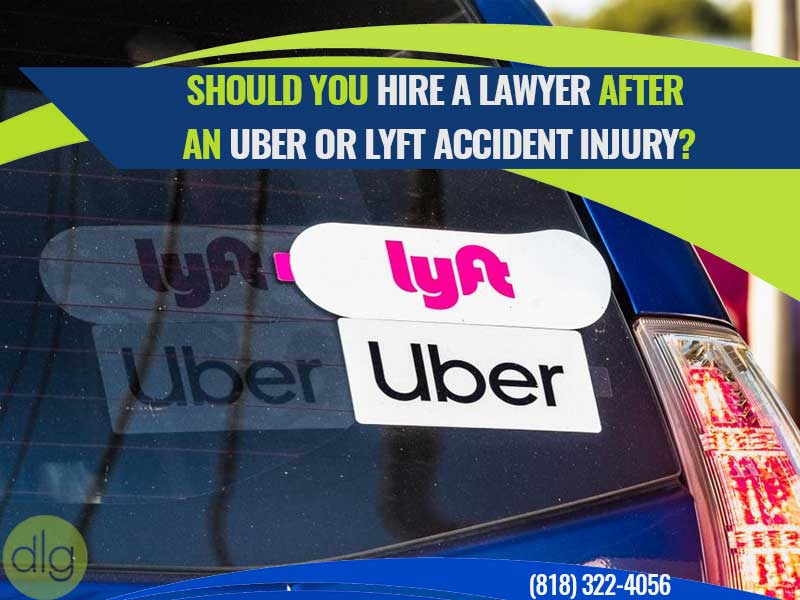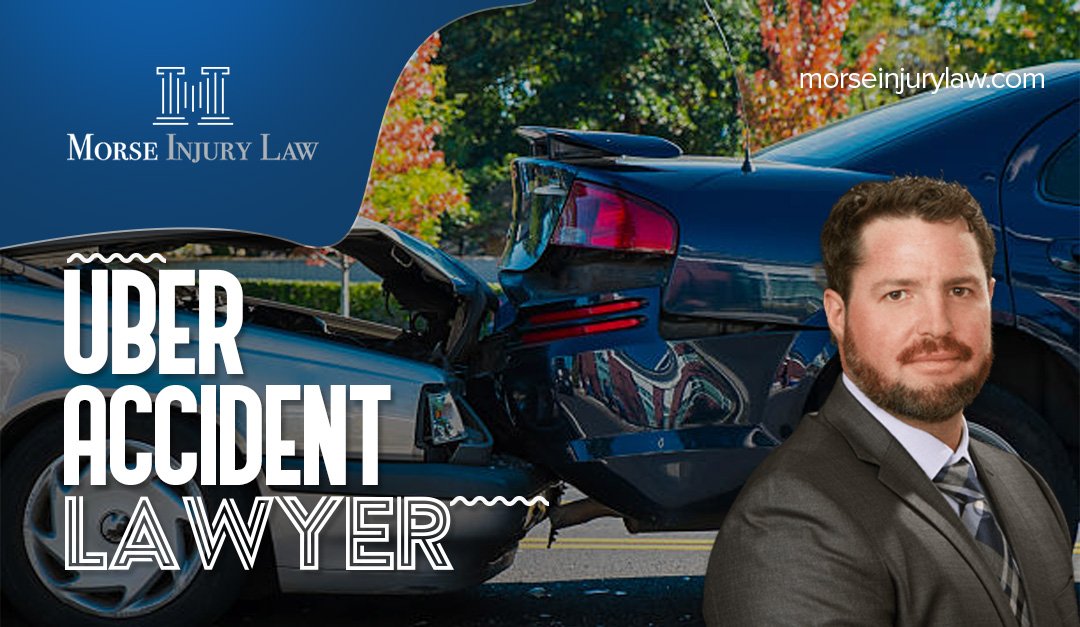uber injury lawyer is a term that’s rapidly gaining importance as rideshare services become a part of daily life. Whether you’re a frequent Uber passenger, a driver, or simply sharing the road, understanding the vital role of an uber injury lawyer can make all the difference after an unforeseen accident. This guide reveals everything you need to know about how these specialized attorneys protect your rights and help you navigate the unique legal landscape of rideshare injuries.
From the moment an accident occurs, the involvement of an experienced uber injury lawyer can dramatically affect the outcome of your claim. They possess specific expertise that goes beyond general personal injury representation, dealing with complex insurance policies, liability disputes, and evolving legal standards unique to rideshare services. By understanding their responsibilities, the types of cases they handle, and the strategies they use, you can be better prepared to secure fair compensation and make informed decisions after an Uber-related accident.
Understanding the Role of an Uber Injury Lawyer

Uber injury lawyers are legal professionals who focus specifically on cases involving injuries sustained in connection with rideshare services, particularly Uber. Their primary role is to advocate for victims—whether passengers, drivers, or even third parties—who have suffered harm as a result of Uber-related accidents. These lawyers have in-depth understanding of both personal injury law and the unique complexities that arise when rideshare companies, insurance policies, and evolving legal standards are involved.
Core Responsibilities and Expertise of Uber Injury Lawyers
Uber injury lawyers take on several critical tasks to support their clients. While some responsibilities overlap with general personal injury attorneys, rideshare cases often require specialized knowledge about the way Uber operates, its insurance structures, and relevant state and federal regulations.
- Investigating accident details and collecting evidence specific to rideshare circumstances.
- Navigating Uber’s insurance policies and determining when coverage applies.
- Communicating and negotiating with insurance companies and Uber’s legal representatives.
- Filing claims, managing paperwork, and guiding clients through litigation if necessary.
- Advising clients on their legal rights and possible outcomes based on precedent and current law.
Differences Between Uber Injury Lawyers and General Personal Injury Attorneys
While all personal injury lawyers handle accident and injury claims, Uber injury lawyers bring additional specialized skills to the table. They stay updated on rideshare-specific legislation, case law, and insurance nuances. For example, determining whether Uber’s commercial insurance applies—or if the driver’s personal insurance is primary—requires expertise that general personal injury attorneys may lack.
Common Types of Cases Handled by Uber Injury Lawyers
Uber injury lawyers most frequently handle cases involving passenger injuries, driver injuries, and accidents involving pedestrians or other vehicles where an Uber car is involved.
- Passenger injury claims due to driver negligence or third-party fault.
- Driver injury cases, including situations where another driver caused a collision.
- Claims involving pedestrians struck by Uber vehicles.
- Accidents caused by hazardous road conditions or defective vehicle parts in Uber cars.
Common Causes of Uber-Related Injuries
Uber-related injuries can occur in a variety of scenarios, involving both passengers and drivers. Understanding the typical circumstances that lead to these injuries is important for victims seeking to establish fault and build a strong legal claim. The following are among the most frequent causes of accidents and injuries in the Uber context.
Frequent Scenarios Leading to Uber Injuries
Many Uber accidents are similar to other vehicle accidents, but some situations are uniquely tied to the rideshare model, such as confusion during pick-ups or driver fatigue from long hours.
| Scenario | Potential Injury | Legal Complexity | Liability |
|---|---|---|---|
| Distracted driving due to app usage | Whiplash, concussions, broken bones | Moderate—must prove distraction linked to Uber duties | Driver, possibly Uber (if app contributed) |
| Fatigue from extended shifts | Major collisions, traumatic injuries | High—evidence of hours worked, Uber’s role in setting conditions | Driver, potentially Uber |
| Unsafe pick-up/drop-off locations | Pedestrian injuries, vehicle damage | Moderate—location rules, local ordinances involved | Driver, sometimes third parties |
| Collisions with uninsured motorists | Soft tissue injuries, property damage | High—insurance coverage disputes | Other driver, Uber’s uninsured motorist coverage |
| Mechanical failure in Uber vehicle | Severe injuries or fatalities | High—requires expert testimony, maintenance records | Driver, car owner, vehicle manufacturer |
Steps to Take After an Uber Accident
After being involved in an Uber accident, immediate and thoughtful action is crucial to protect your health and legal rights. The steps you take in the aftermath can have a lasting impact on your ability to recover damages and prove liability.
Immediate Actions Following an Uber Accident
Taking the right steps helps ensure your well-being, preserves vital evidence, and provides documentation that supports future claims.
- Seek medical attention right away, even for seemingly minor injuries. Prompt treatment creates a medical record and rules out latent issues.
- Report the accident to law enforcement and ensure an official police report is filed. This report often becomes essential evidence.
- Notify Uber through the app or customer support. This establishes an official record with the company.
- Gather evidence at the scene, such as photos of vehicle damage, injuries, road conditions, and the surrounding environment.
- Collect contact and insurance information from all parties involved, including the Uber driver and any witnesses.
- Preserve all receipts and records related to medical care, rideshare transactions, and communication with Uber or insurers.
Importance of Each Step in Supporting a Claim
Each of these steps plays a key role in building a successful legal case. Medical records substantiate injuries, police reports provide official documentation of the event, and direct contact with Uber ensures the incident is tracked in their system. Evidence from the scene can clarify fault, while thorough record-keeping helps calculate damages and track interactions with insurers.
“Comprehensive documentation and prompt reporting are essential for maximizing compensation and expediting the claims process.”
Legal Rights of Uber Accident Victims
Individuals injured in Uber-related accidents, whether passengers or drivers, have legal protections that enable them to seek compensation for their injuries. These rights are shaped by local laws, Uber’s company policies, and the details of the accident.
Legal Protections for Uber Passengers and Drivers

Both Uber passengers and drivers are covered by varying degrees of insurance and legal recourse. Passengers generally have stronger protections, as they are considered third parties with no control over the vehicle’s operation.
- Uber’s commercial insurance typically covers passengers during rides, offering compensation for medical expenses, lost wages, and pain and suffering.
- Drivers may be protected by Uber’s policy, especially when transporting passengers or en route to pick-ups, but are often subject to more scrutiny regarding their own fault or negligence.
- State and local laws may provide additional rights for rideshare accident victims, such as access to no-fault insurance or extended liability coverage.
Rideshare Company Liability Versus Individual Driver Responsibility
Liability in Uber accidents can be complex, depending on whether the driver was “on the clock” (actively using the app) or off-duty. Uber’s insurance may apply only when the driver is logged into the app and engaged in a ride, while drivers’ personal insurance may be responsible otherwise.
Scenarios Where Uber’s Insurance Applies or Does Not Apply
Uber’s insurance typically covers:
- Active rides where a passenger is in the vehicle.
- Trips to pick up a passenger after accepting a ride request.
- Some coverage (often less comprehensive) when the driver is online but waiting for a ride request.
However, Uber’s coverage may not apply if:
- The driver is offline or using the vehicle for personal reasons.
- The accident involves criminal activity or gross negligence.
Understanding these distinctions is vital for pursuing the correct source of compensation.
Navigating the Uber Injury Claims Process: Uber Injury Lawyer
The process of filing and pursuing a claim after an Uber accident can be complicated, involving several stages and potential roadblocks. Knowing what to expect can help claimants prepare and respond effectively.
Stages of Filing an Uber Injury Claim
Each step in the Uber injury claims process serves a distinct function, from initial notification to final settlement. The following table Artikels the typical stages, timelines, and required documentation.
| Step | Description | Timeline | Required Documentation |
|---|---|---|---|
| Initial Notification | Informing Uber, insurers, and law enforcement of the accident | Immediately to 24 hours after accident | Accident details, police report, photos |
| Claim Filing | Submitting a formal claim to Uber and/or insurance companies | Within days to weeks post-accident | Injury reports, insurance forms, medical records |
| Investigation | Insurance adjusters and lawyers review the incident and liability | 2-8 weeks or longer | Witness statements, additional evidence, app data |
| Negotiation & Settlement | Parties attempt to resolve the claim out of court | Several weeks to months | All prior documentation, settlement offers |
| Litigation (if needed) | Case proceeds to court if no settlement is reached | Months to years | Full case file, expert testimony, court filings |
Common Obstacles in the Claims Process
Obstacles often arise at each stage, such as delayed responses from Uber, disputes over insurance coverage, or challenges gathering critical evidence. Additionally, claimants may face attempts to undervalue their injuries or assign fault unfairly.
“Persistence, thorough documentation, and skilled negotiation are key to overcoming challenges in the Uber injury claims process.”
How an Uber Injury Lawyer Can Help
Uber injury lawyers bring specialized knowledge and strategic skills to maximize the chances of a successful claim. Their involvement often leads to better outcomes and fairer settlements for injured parties.
Strategic Actions Taken by Uber Injury Lawyers
A lawyer experienced in Uber injury cases can approach each claim with a toolkit designed for rideshare complexity. They:
- Conduct detailed investigations using rideshare data, vehicle records, and witness testimony.
- Challenge insurance denials and negotiate for higher settlements based on the full scope of injuries and losses.
- Prepare and present compelling cases in court if negotiations fail.
- Advise clients on realistic compensation expectations and potential settlement outcomes.
Examples of Successful Legal Interventions
In one case, an Uber passenger received a lowball settlement offer after suffering neck and back injuries in a collision. The lawyer gathered additional medical documentation and leveraged Uber’s app data to show the driver’s speeding, resulting in a settlement five times higher than the initial offer.
A driver involved in a multi-car pileup faced denied liability by both Uber and the other driver’s insurer. Their attorney secured dashcam footage and used state law precedents to establish clear liability, ensuring the driver’s medical bills and lost wages were fully covered.
Benefits of Legal Representation in Uber Injury Cases, Uber injury lawyer
With a skilled lawyer on their side, claimants can expect stronger advocacy in negotiations, better management of complex paperwork, and increased leverage against large insurers and powerful companies like Uber. This often leads to faster resolutions and more comprehensive compensation for injuries and losses.
Compensation Available in Uber Injury Cases
Victims of Uber-related accidents may be entitled to several forms of compensation, depending on the nature and severity of their injuries. Understanding what types of damages are recoverable, and what factors affect the amount, is key to setting realistic expectations.
Types of Damages Recoverable in Uber Accident Claims
Compensation in Uber injury cases typically falls into categories such as medical expenses, lost income, pain and suffering, and property damage. The following table Artikels the details of each type.
| Damage Type | Eligibility Criteria | Calculation Method | Documentation Needed |
|---|---|---|---|
| Medical Costs | Documented injury requiring treatment | Total of bills and projected future care | Medical records, bills, doctor’s notes |
| Lost Income | Proof of missed work and earnings reduction | Wage statements, employment history | Pay stubs, employer letters, tax returns |
| Pain and Suffering | Demonstrable physical/emotional distress | Multiplier applied to economic damages | Medical evaluations, personal journals |
| Property Damage | Damage to vehicle or personal items in the car | Repair/replacement costs | Repair invoices, photos, app receipts |
Factors Affecting Compensation Amounts
Several elements influence the final settlement or award in Uber injury cases. Severity of injuries, clarity of liability, availability of evidence, and the policy limits of Uber and other insurers all play major roles. Additionally, comparative negligence laws in some states may reduce compensation if the victim is found partially at fault.
“Documenting all expenses and injuries thoroughly is the best way to maximize compensation and support your claim.”
Choosing the Right Uber Injury Lawyer

Selecting the right attorney is a critical step for anyone pursuing an Uber injury claim. The quality of legal representation can make a significant difference in the outcome of your case.
Considerations for Selecting Legal Representation
When evaluating potential Uber injury lawyers, consider criteria that reflect both expertise and personal compatibility. Choosing wisely increases confidence and improves the chances of a favorable result.
- Experience with Uber and rideshare-specific injury cases
- Proven track record of settlements and verdicts in similar claims
- Strong reputation and client testimonials
- Transparent communication and responsiveness
- Clear fee structures and willingness to offer free consultations
Value of Consultations in the Selection Process
Consulting with a prospective lawyer before hiring them offers a valuable opportunity to assess their approach, understand your case’s strengths and weaknesses, and clarify expectations. These initial meetings help both lawyer and client determine if the collaboration will be a good fit.
Recent Legal Developments Affecting Uber Accident Cases
The legal landscape surrounding Uber accidents continues to evolve, as courts and legislatures respond to new challenges presented by the rideshare model. Staying informed about these changes is vital for anyone pursuing or defending a claim.
Legislative and Court Rulings Impacting Uber Injury Liability
In recent years, several landmark cases and legislative updates have clarified or expanded Uber’s liability in accident cases. For example, states like California have passed laws (e.g., AB5) classifying some rideshare drivers as employees rather than independent contractors, affecting insurance and liability considerations.
- Implementation of employee status for certain drivers, increasing Uber’s insurance responsibilities.
- Rulings that app data can serve as critical evidence in establishing fault and timing of an accident.
- Expansion of mandatory minimum insurance coverage for rideshare operators in many states.
Impact of Legal Trends on Uber Accident Victims
These legal shifts often provide greater protections and larger potential recoveries for injured parties. By redefining the relationship between Uber, its drivers, and passengers, courts are changing how compensation is determined and who can be held responsible.
“Recent legal developments are expanding opportunities for Uber accident victims to pursue fair compensation, even as companies adapt their business practices to new regulations.”
Ending Remarks
In summary, having the right uber injury lawyer by your side can be a game-changer if you ever face the aftermath of an Uber accident. Their deep knowledge, strategic approach, and commitment to your best interests ensure you’re not left navigating a complicated claims process alone. As rideshare laws continue to develop, staying informed and relying on experienced legal support can help protect your rights and maximize your recovery—empowering you to focus on healing while your lawyer handles the rest.
FAQ Guide
What qualifies as an Uber injury case?
An Uber injury case typically involves injuries sustained by passengers, drivers, or third parties in an accident where Uber is involved, either directly through the app or as a rideshare service.
Do Uber injury lawyers charge upfront fees?
Most uber injury lawyers work on a contingency fee basis, meaning they only get paid if you win your case or receive a settlement.
Can I still file a claim if I was partially at fault?
Yes, in many states you can still pursue compensation even if you share some fault, but your recovery may be reduced by your percentage of responsibility.
How long does it take to resolve an Uber injury claim?
The timeline varies depending on the complexity of the case, the severity of injuries, and negotiations with insurers, but it can range from a few months to over a year.
Is there a time limit for filing an Uber injury lawsuit?
Yes, each state has a statute of limitations for personal injury claims, usually between one and three years from the date of the accident, so it’s important to act quickly.
